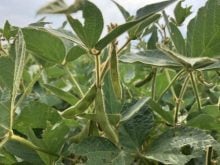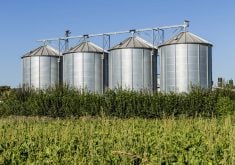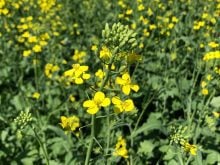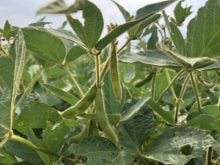Time may be running out for spring seeding in Manitoba, while the northern U.S. has faced similar delays, but the futures markets are generally looking past the poor planting progress to focus on conditions for what’s in the ground.
Outside factors, such as the ongoing war in Ukraine, are also accounting for much of the day-to-day direction in markets.
Excessive precipitation this spring took Manitoba and eastern Saskatchewan out of drought, which should bode well for production if producers manage to get their fields seeded. That’s still in question, though, as insurance deadlines draw near. Canola can go in the ground later than many other crops, so total Canadian area to the crop this year may not end up too far off overall intentions — especially as some fields originally slated for something else may end up seeded to canola instead.
Read Also

Gene editing digs deeper space in Canadian plant breeding
More Canadian research into crop variety development is incorporating gene editing, and one researcher notes that Canada’s regulatory approach to gene editing will help drive innovation
Canola futures saw some mixed activity during the week but were weaker overall. Prices dropped below some key chart points, which could be the precursor to additional speculative profit-taking. While the fundamental argument of tight supplies necessitating high prices has not gone away, those prices only need to be high relative to other options.
In the U.S., soyoil came under pressure, but soybeans hit some of their best levels in a decade during the week. Solid export demand was the catalyst for the strength in that market. Corn found spillover support from soybeans, with market participants also talking up the production issues in parts of South America.
Wheat futures bounced around on ‘will they/won’t they’ news concerning the possibility of Ukrainian grain exports. Russia has said it’s open to creating a corridor of safe passage for Ukrainian grain through the Black Sea and was even in talks with Turkey. However, there are plenty of caveats on that promise and Ukrainian grain movement remains limited. In addition, it could take months to clear the mines around Ukrainian ports to make any exports possible.
Wheat futures remained pointed higher overall, with Minneapolis spring wheat leading to the upside. Seeding remains well behind normal for the crop, with U.S. acres unlikely to meet expectations.
Meanwhile, the U.S. winter wheat harvest is underway in the far south and will be trending northward in the coming weeks. That seasonal harvest pressure could keep a lid on the upside, although confirmation of poor yields would have a supportive influence.
Shifting global risk sentiment could also come to play in agricultural futures, as world economies continue to recover from the COVID-19 pandemic while also dealing with rising inflation. The Canadian dollar saw some choppy activity during the week, hitting its highest levels in two months at one point before falling sharply lower. Crude oil also has the potential for volatility, with demand rationing a possibility.
















